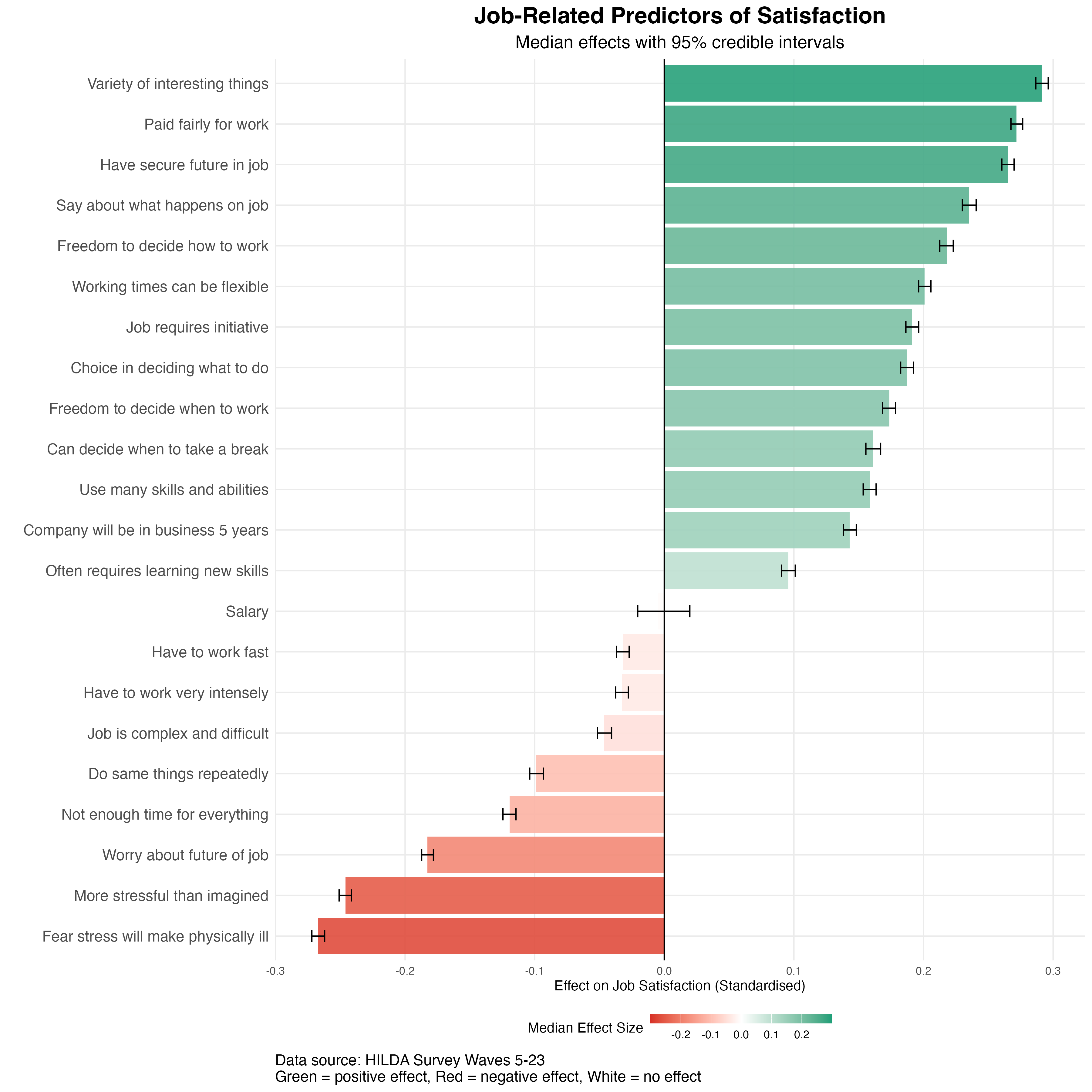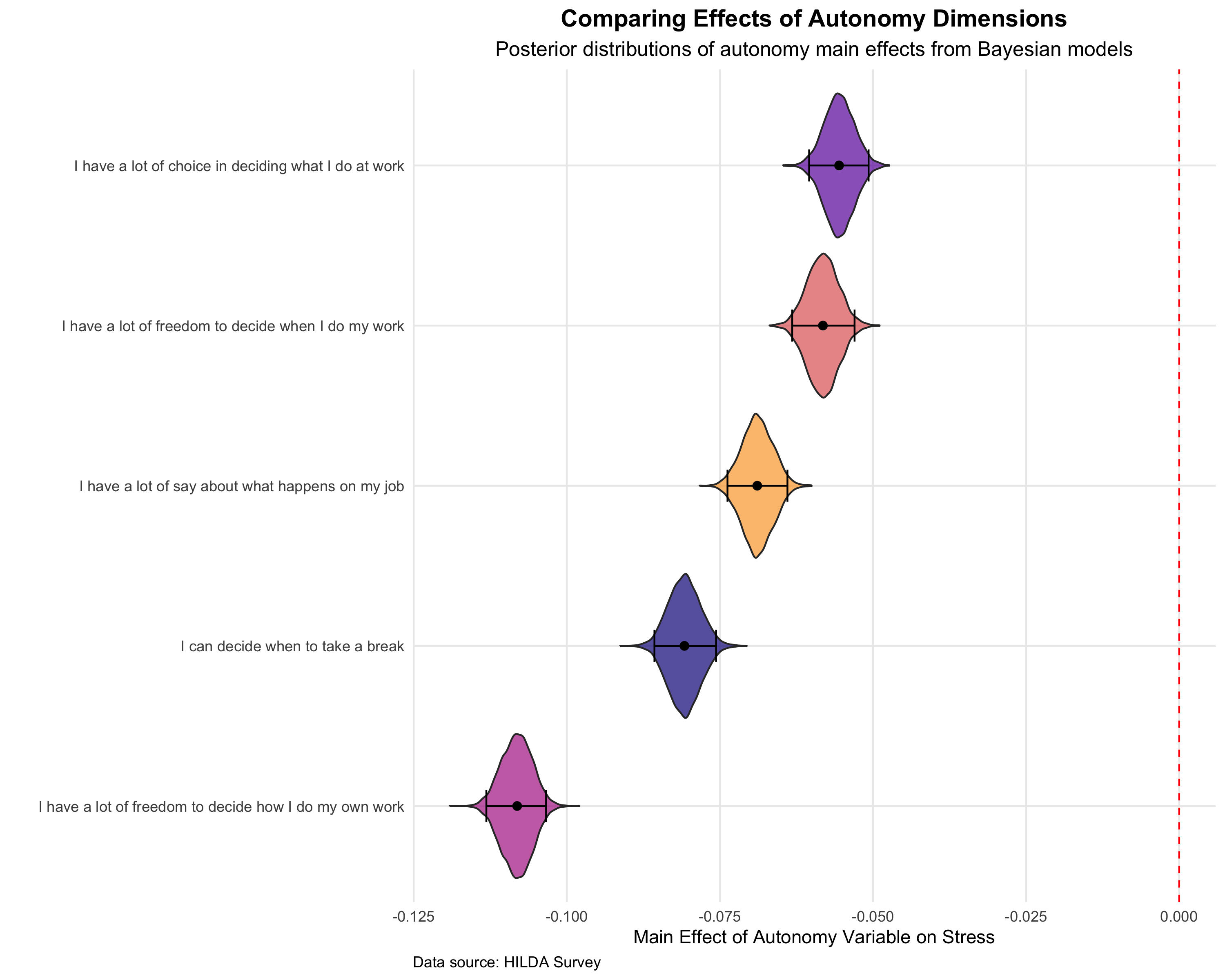The Hidden Cost of Psychological Distress: How Does Mental Health Impact Workforce Retention?
The quiet struggles of employees facing mental health challenges often go unnoticed until a valued team member resigns, citing burnout or personal reasons. With discussions around workplace mental health becoming more prominent, particularly in light of increased stressors in recent years, organisations are waking up to the profound impact of psychological wellbeing on their workforce. Recent reports highlight that poor mental health in Australian workplaces can cost the economy billions annually through absenteeism, presenteeism, and turnover. But how strongly does an employee’s psychological distress influence their decision to leave employment altogether?
Psychological Distress and Work Exit: What the Data Show
To investigate this question, we analysed data from the Household, Income and Labour Dynamics in Australia (HILDA) survey, a nationally representative long-term study that has been tracking Australians’ lives since 2001. Our analysis included 22,668 participants. We used a generalised linear mixed model to predict the likelihood of an employee exiting the workforce in the subsequent year based on their level of psychological distress. This model also accounted for other important factors such as physical health, job satisfaction, whether the employee was in a blue-collar role, gender, and age, allowing us to isolate the impact of mental wellbeing.
The bar chart below illustrates the predicted percentage of employees exiting work within the next year across different levels of psychological distress, categorised as Low, Moderate, High, and Very High. The vertical axis represents the predicted probability of exiting work. A clear and concerning pattern emerges: as an employee’s psychological distress intensifies, so does their likelihood of leaving the workforce. Employees reporting Low psychological distress had approximately a 5.3% chance of exiting work in the following year. This figure rose slightly to 5.6% for those with Moderate distress. For employees experiencing High psychological distress, the change of work exit increased to 6.8%. Finally, those with Very High psychological distress faced an 8.7% probability of leaving their employment – meaning they were over 1.6 times more likely to exit work compared to their peers with low distress.

After controlling for other relevant factors, we found that for each standard deviation increase on the scale measuring psychological distress, the odds of an employee exiting the workforce in the following year rose by approximately 7.9%, indicating that psychological distress was a significant risk factor for workforce attrition. These findings align with a growing body of research, such as this white paper by the Black Dog Institute, which consistently shows that poor mental health is a key driver of turnover and reduced work capacity.
Other factors also played a role: higher job satisfaction and better physical health were associated with a lower likelihood of work exit, while older age significantly increased the probability of leaving employment (as expected, given that older folks are more likely to retire). Interestingly, being female was associated with slightly lower odds of exiting work in this model.
Fostering Wellbeing to Retain Talent: Practical Implications
These findings have clear implications: employee wellbeing is not just a “nice-to-have”; it’s a critical factor in workforce stability and retention. For HR professionals, managers, and organisational leaders, these insights translate into several actionable strategies:
-
Champion Proactive Mental Health Support: Organisations must move beyond reactive measures. Implementing comprehensive mental health strategies, including accessible Employee Assistance Programs (EAPs) and initiatives to destigmatise seeking help, is essential. Creating a mentally healthy workplace involves a preventative approach, aiming to mitigate stressors before they escalate into significant distress.
-
Focus on Job Design and Workload Management: Chronic stress is a major contributor to poor mental health. Regularly review job roles, workloads, and deadlines to ensure they are manageable. Are employees consistently working excessive hours? Do they have autonomy and control over their work? Addressing systemic sources of stress within the work environment itself can significantly reduce the risk of burnout and subsequent work exit.
-
Embed Flexibility and Support into the Culture: Offering flexible work arrangements can be a powerful tool in helping employees manage stress and balance work-life demands. Beyond formal policies, foster a culture where taking time for wellbeing is encouraged and supported by leadership. This includes managers regularly checking in on team members’ wellbeing and being empathetic to individual circumstances.
-
Invest in Manager Training: Managers are at the frontline of employee experience. Equipping them with the skills to recognise early signs of distress, have supportive conversations, and guide employees to appropriate resources is paramount. Research by Gartner suggests that manager support is key to employee wellbeing. When employees feel their manager genuinely cares, they are more likely to feel supported through challenging times.




